
Overview
The article delineates a five-step process for effectively persuading individuals to take action. It underscores the significance of:
- Grasping psychological principles
- Cultivating rapport
- Articulating benefits
- Addressing objections
- Executing follow-ups
Each step is bolstered by strategies and examples that demonstrate how to harness these techniques to align with the audience's motivations and enhance the likelihood of compliance.
Introduction
Mastering the intricate dynamics of persuasion is essential for anyone looking to influence others effectively. By exploring the psychology behind why individuals say "yes," one can learn to construct compelling arguments that align with their audience's motivations. Yet, what transpires when traditional methods of persuasion prove inadequate? This article delineates five actionable steps designed to:
- Bolster the ability to persuade others
- Tackle the challenges that frequently emerge in the process
Understand the Psychology of Persuasion
To understand how can I convince someone to do something, it is essential to grasp key psychological principles such as:
- Reciprocity
- Scarcity
- Authority
- Consistency
- Liking
- Consensus
These principles serve as the foundation for understanding how can I convince someone to do something effectively by creating compelling arguments that resonate with your audience's motivations. For instance, reciprocity indicates that individuals are more inclined to comply with requests when they feel indebted to you. Leverage this principle by offering something beneficial upfront, whether it be information, assistance, or a small gift.
Furthermore, scarcity can instill a sense of urgency; by highlighting limited availability, you can encourage quicker decision-making. By familiarizing yourself with these concepts, you can tailor your approach effectively, which raises the question of how can I convince someone to do something in alignment with Parah Group's five-step process for profit-enhancing optimizations. This alignment ensures that every aspect of your strategy speaks directly to your audience's behaviors.
Moreover, crafting a narrative that resonates with the customer’s identity, coupled with a , will enhance the credibility of your approach and create a deeper connection with your audience.
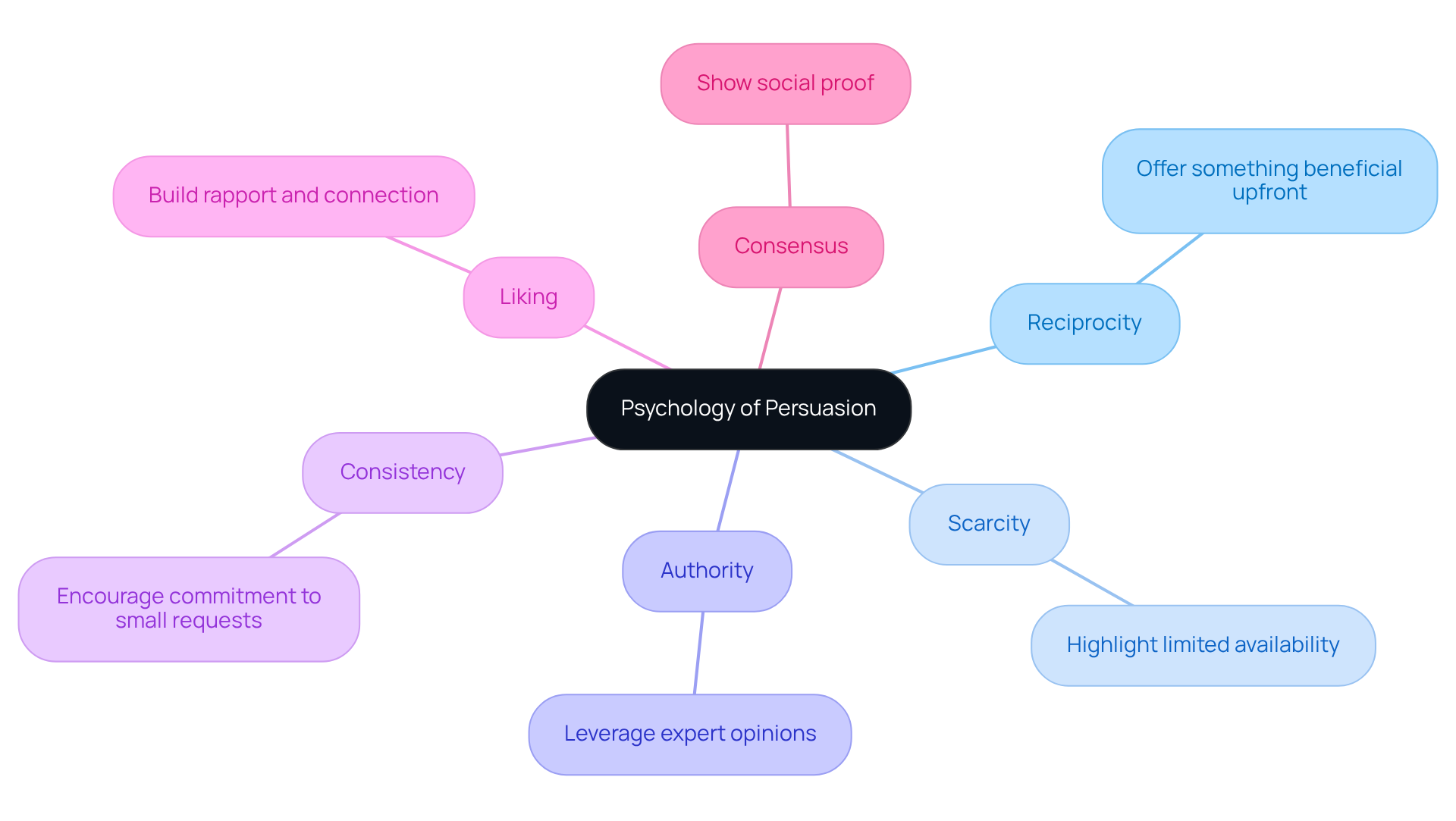
Build Rapport and Trust
Establishing rapport is essential for creating a genuine connection with the individual, which is crucial for understanding how can I convince someone to do something. Start by identifying common ground—shared interests, experiences, or principles serve as a bridge. Employ active listening techniques to demonstrate that you value their opinions and feelings. Furthermore, non-verbal signals, such as maintaining eye contact and mirroring body language, significantly enhance rapport. When the other person feels understood and valued, it can show how can I convince someone to do something, as they are more inclined to be receptive to your suggestions.
To effectively establish rapport, consider these action steps:
- Identify shared interests or experiences prior to your conversation.
- Practice active listening by summarizing their points and posing open-ended questions.
- Utilize positive body language to reinforce your engagement.
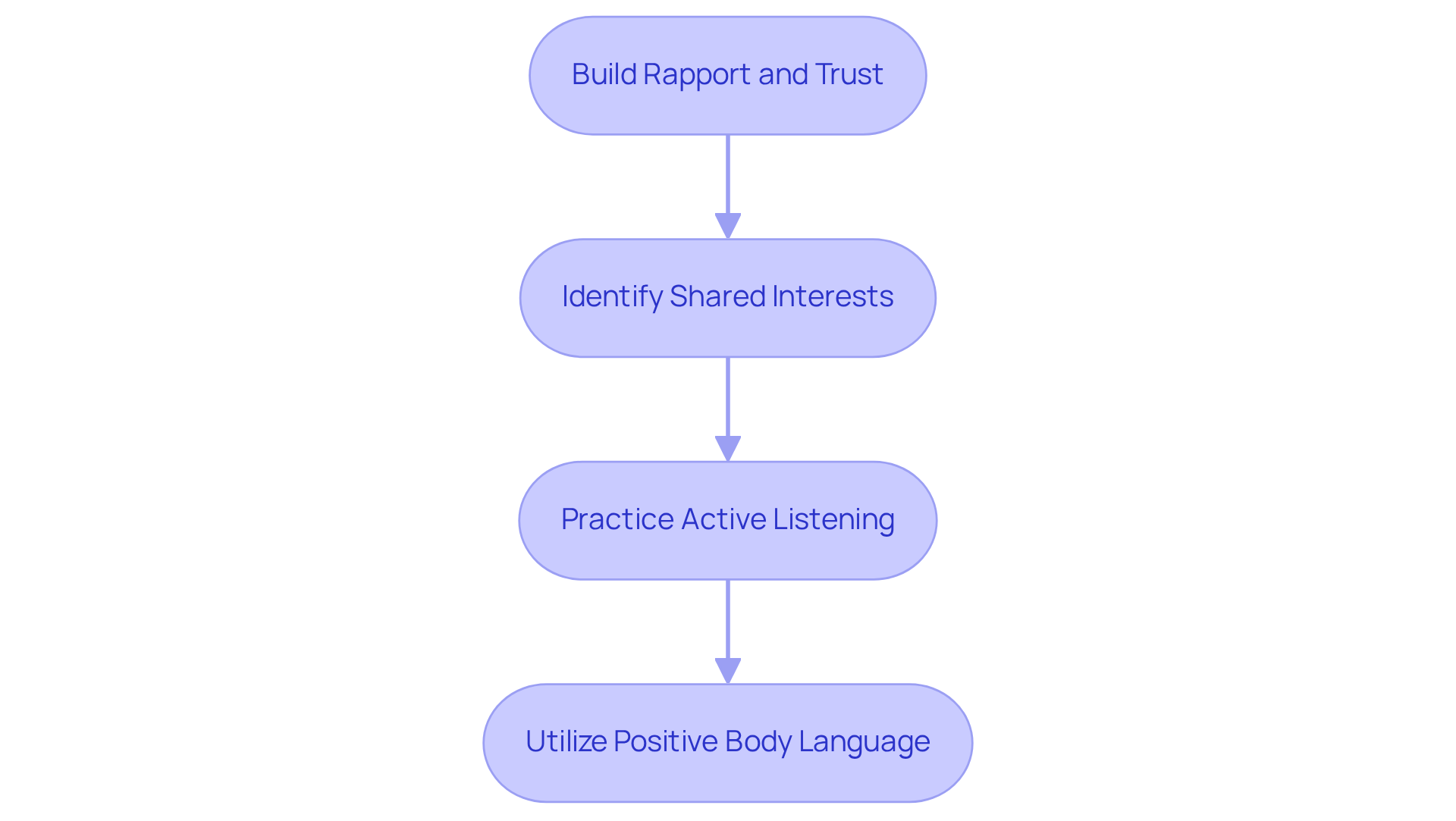
Communicate Clear Benefits
When considering how can I convince someone to do something, it is crucial to emphasize the specific benefits that the other person will gain. Utilize clear and concise language to demonstrate how can I convince someone to do something that aligns with their needs or objectives. For instance, if you are wondering how can I convince someone to do something, you might persuade a colleague to implement a new process by articulating how it can save time, alleviate stress, or enhance results. When thinking about how can I convince someone to do something, supporting your claims with data or testimonials not only adds credibility but also reinforces the value of your proposal.
Research indicates that 96% of individuals believe effective communication is vital in business interactions; yet, 61% feel they waste time in meetings, underscoring the need for clarity. Furthermore, 68% of individuals have transitioned to rivals because of inadequate communication abilities, emphasizing the significance of expressing advantages effectively.
To enhance your persuasive efforts, consider these action steps:
- Identify the main advantages of your proposal from the other person's viewpoint.
- Gather supporting evidence, such as relevant statistics or case studies, to substantiate your claims. For instance, Parah Group helped a $30M apparel brand increase its conversion rate by 35% and revenue per visitor by 10% through strategic homepage redesigns and optimized pricing. Similarly, a $15M cleaning product brand saw an 80% increase in average order value (AOV) by implementing free shipping thresholds and product bundles.
- Practice presenting these advantages in a clear and engaging way, ensuring your message connects with your audience.
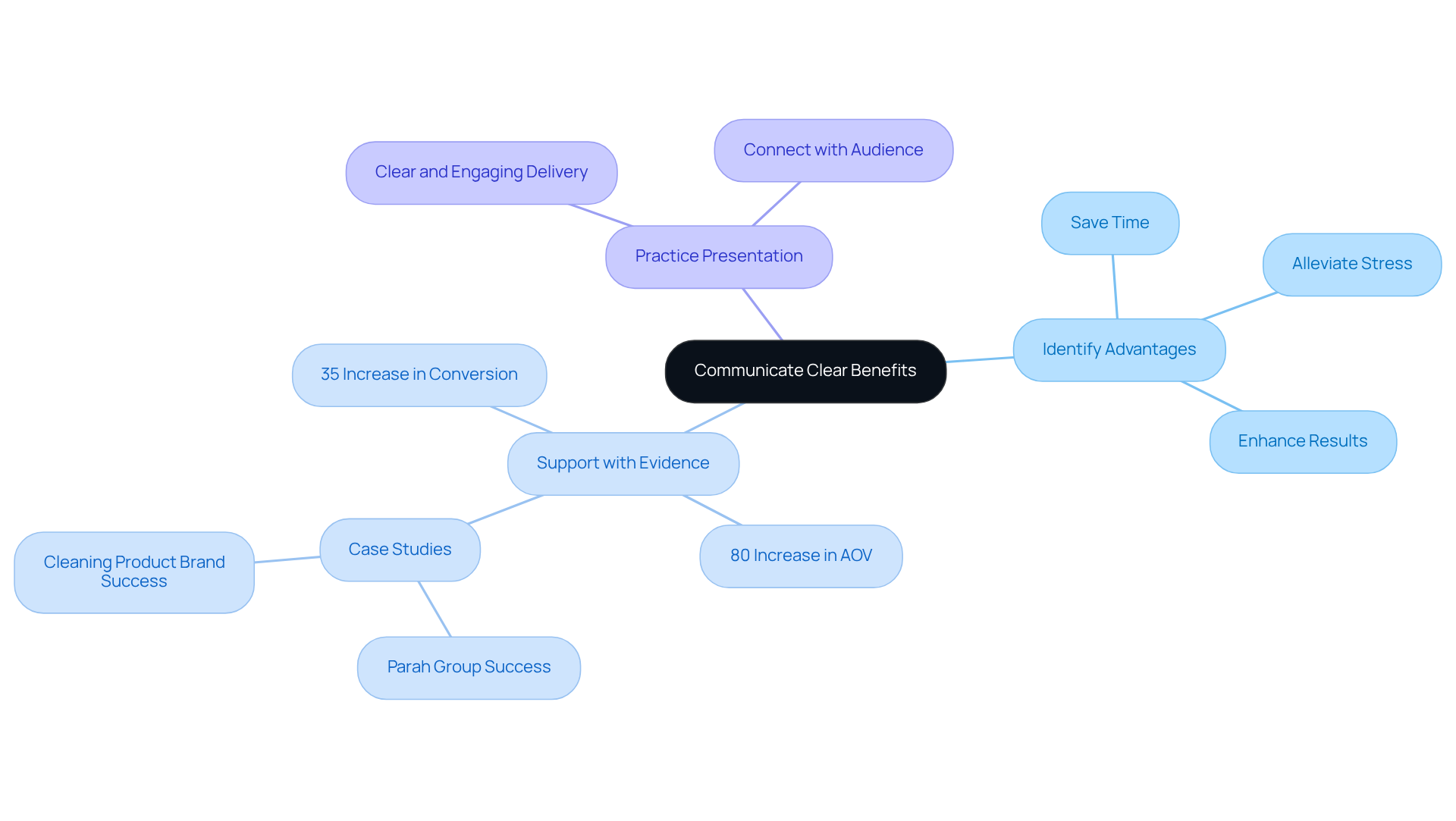
Anticipate and Address Objections
In any convincing discussion, understanding how can I convince someone to do something by anticipating possible counterarguments is vital for success. Common concerns often revolve around cost, time, or perceived risks. By preparing considerate replies that recognize these concerns while highlighting the advantages of your proposal, you can demonstrate how can I convince someone to do something and greatly improve your persuasive efforts. For instance, if cost is a concern, it’s effective to emphasize the long-term savings or return on investment (ROI) that your proposal offers. This proactive approach not only alleviates fears but also strengthens your position.
To effectively navigate objections, consider the following strategies:
- Identify Potential Objections: List the objections you expect from the other party. Understanding their perspective is , particularly in terms of how can I convince someone to do something. To address each challenge effectively, consider how can I convince someone to do something by crafting clear and concise replies. This clarity will help you understand how can I convince someone to do something regarding your credibility and authority during discussions.
- Practice Delivery: Rehearse your responses to ensure you can present them confidently. Confidence in your delivery is key to understanding how can I convince someone to do something during the conversation.
Studies show that tackling concerns directly can result in greater persuasion success rates. For example, sales experts who adeptly manage challenges are frequently recognized as leading achievers in their industry. As John F. Kennedy noted, "Let us never negotiate out of fear. But let us never fear to negotiate." By employing these strategies, you can transform resistance into opportunities for constructive dialogue and agreement. Additionally, for further guidance on recognizing and addressing objections in sales, consider exploring the new eBook titled 'Handling Objections.
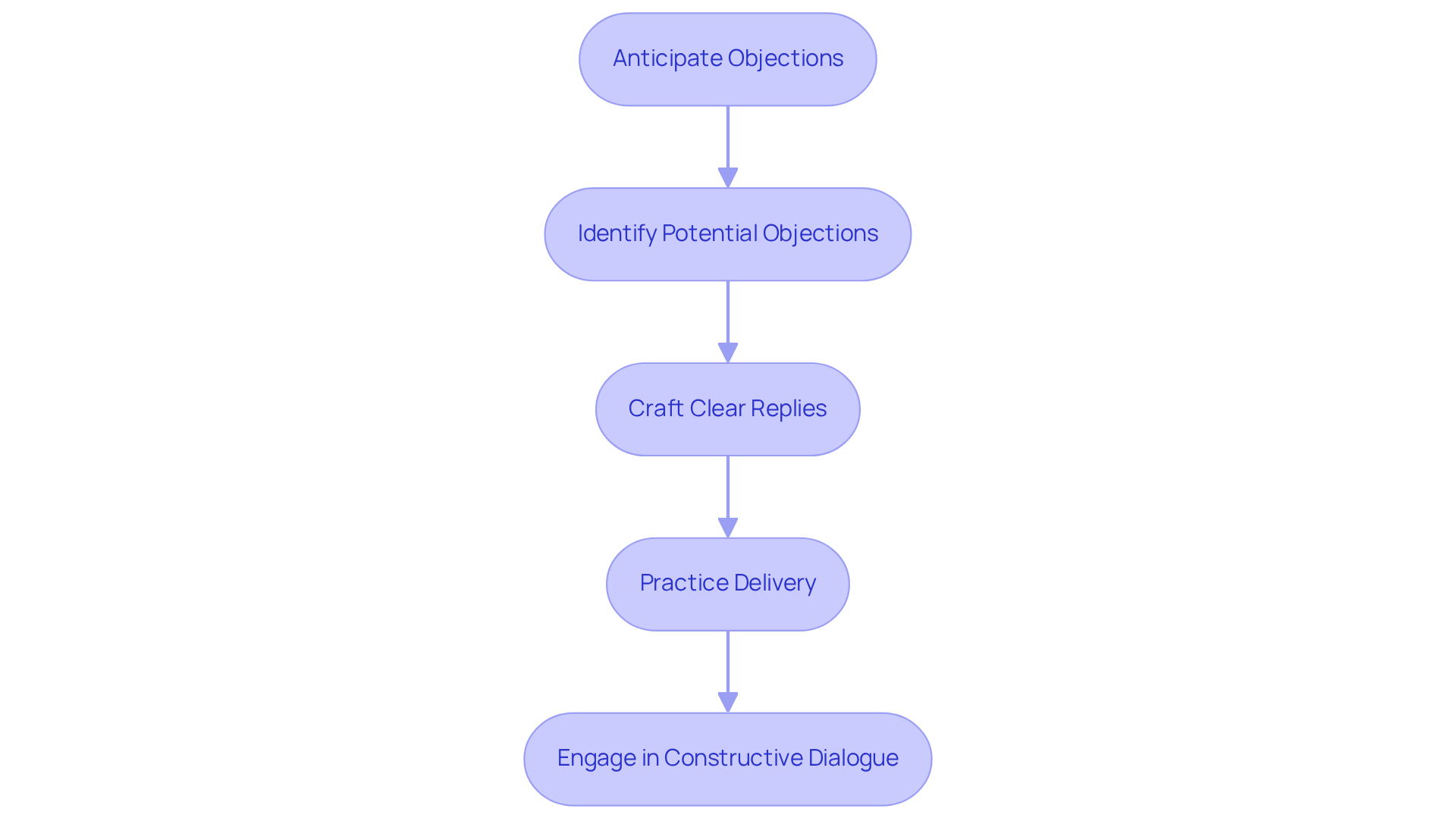
Follow Up and Reinforce Commitment
Following your initial conversation, it is essential to follow up with the individual to reinforce their commitment. A succinct message expressing gratitude for their time, while reiterating the key benefits discussed, can significantly impact how can I convince someone to do something in their decision-making process.
Emphasize how your strategies can enhance their conversion rates and profitability. If relevant, provide additional resources or information that can aid their decision, such as insights into how can lead to sustained growth and increased returns on their marketing investments.
This follow-up not only demonstrates your genuine concern but also keeps the dialogue active, illustrating how can I convince someone to do something, thereby increasing the likelihood of a favorable outcome.
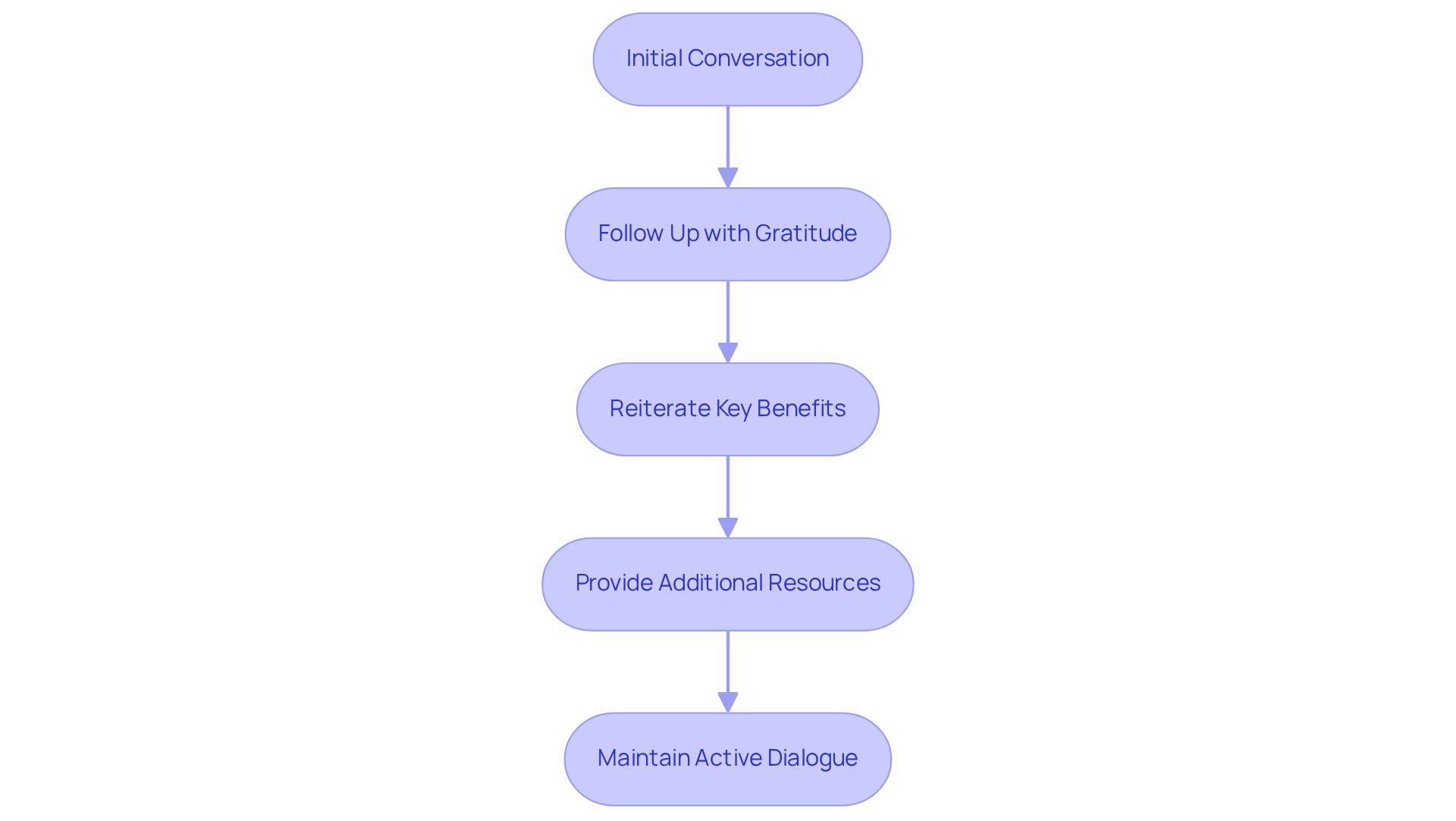
Conclusion
Effectively convincing someone to take action relies on a nuanced understanding of psychological principles and strategic communication. By leveraging concepts such as reciprocity, scarcity, and authority, individuals can craft persuasive arguments that resonate profoundly with their audience. Establishing rapport and trust is equally vital, as it nurtures a genuine connection that fosters receptiveness to suggestions.
This article delineates a comprehensive five-step process encompassing the building of rapport, clear communication of benefits, anticipation of objections, and follow-up to reinforce commitment. Each step is meticulously designed to enhance persuasive efforts, ensuring that individuals feel valued and understood while addressing their concerns. By employing these techniques, one can significantly elevate the likelihood of achieving desired outcomes across various interactions.
Ultimately, the art of persuasion transcends mere convincing; it is about forging meaningful connections and comprehending the motivations that drive decision-making. Embracing these strategies can lead to more productive conversations and successful outcomes, urging individuals to reflect on their approach to influence and collaboration. Taking action on these insights can transform not only personal interactions but also professional relationships, paving the way for sustained success and mutual benefit.
Frequently Asked Questions
What are the key psychological principles for persuasion?
The key psychological principles for persuasion include reciprocity, scarcity, authority, consistency, liking, and consensus.
How does the principle of reciprocity work in persuasion?
The principle of reciprocity suggests that individuals are more likely to comply with requests when they feel indebted to someone. This can be leveraged by offering something beneficial upfront, such as information, assistance, or a small gift.
How can scarcity be used to persuade someone?
Scarcity can create a sense of urgency by highlighting limited availability, which encourages quicker decision-making from the audience.
What is the importance of crafting a narrative in persuasion?
Crafting a narrative that resonates with the customer’s identity, along with a data-driven strategy, enhances the credibility of your approach and fosters a deeper connection with your audience.
Why is building rapport and trust important in persuasion?
Building rapport and trust is essential for creating a genuine connection, making individuals more receptive to your suggestions.
What are some effective ways to establish rapport?
Effective ways to establish rapport include identifying common ground, practicing active listening, and using positive body language.
How can active listening enhance persuasion efforts?
Active listening demonstrates that you value the other person's opinions and feelings, making them more inclined to be receptive to your suggestions.
What non-verbal signals can improve rapport?
Non-verbal signals such as maintaining eye contact and mirroring body language can significantly enhance rapport during conversations.
FAQs











